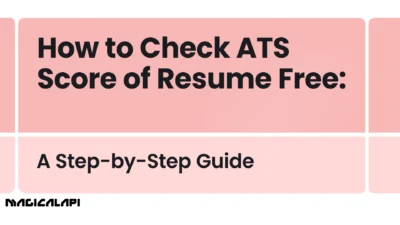If you have ever found yourself drowning in a sea of unstructured info, desperately wishing for a magical solution to pluck out the good stuff, well, you are in the right place. Today, we are unpacking everything you need to know about these game-changing tools, from what they are to why they’re your new best friend.
Plus, I’ve got a hefty list of 18 data extraction tools to share, and we’ll wrap it up with some FAQs to quench your curiosity. Buckle up! This is going to be a long, juicy ride!
Data is the lifeblood of modern business, and data extraction is more critical than ever. Whether from structured databases or unstructured data, these tools bridge the gap between raw data and sound decisions. In this complete guide, we’ll explain what data extraction tools are, why you should use them, and highlight 18 of the top ones available on the market now.
Table of Contents
What are Data Extraction Tools?
Let’s begin with the basics. best Data extraction software is your digital superheroes, swooping in to pull out structured data from messy, unorganized sources. Think websites, PDFs, emails, images, or essentially anything where information is buried in it. Extraction software reads, identifies, and extracts the data you need, transforming raw, disorganized chaos into neat, usable datasets.
LinkedIn Company Scraper - Company Data
Discover everything you need to know about LinkedIn Company Scraper , including its features, benefits, and the various options available to streamline data extraction for your business needs.
Regardless of whether it is extracting product prices from an e-commerce website or grabbing contact details from a pile of documents, these bad boys deliver.
Now, here’s where it gets interesting. Some of these tools are high-end data extraction software automation, meaning they do the heavy lifting without you breaking a sweat. Others could be top data extraction tools open source, offering free access for you to play and customize to your heart’s content. From web scraping software that crawls the web to information extraction software that cracks difficult files, there’s a flavor for every need.
In short, these tools are a treasure map to the online world, taking you straight to the gold without the hassle of digging up the earth.
Why Do You Need Data Extraction Tools?
Why should you give a care about data extraction software? Easy: time, efficiency, and sanity. In a data-is-king world, copying and pasting information from a hundred various sources isn’t just tedious; it’s masochistic!
That’s where best data extraction software saves the day, doing the tedium for you so you can get to the fun parts like examining trends or making life-changing decisions.
Imagine you are a business owner tracking competitors’ prices. Without software, you’re clicking refresh and writing down figures. With web scraping software, you’ve got current data in an Excel sheet before your coffee has even cooled. Or maybe you’re a scholar sifting through PDFs for key statistics. Unstructured data extraction software can extract those figures faster than you can say “peer review.”.
And don’t even mention the scalability factor. Do you want data from a single website? Okay. A thousand websites? No problem. Data mining software and automated scripts scale with your ambitions, turning mountains of data into usable insights. And if budget is an issue, open-source data extraction software open source lets you dip your toes in without spending a dime. Bottom line: these tools aren’t nice-to-haves—they’re need-to-haves for anyone serious about data.
Types of Data Extraction Tools
- Web Scraping Tools
Applications that automatically gather data from websites, such as product prices, reviews, or news articles. Examples include Scrapy, BeautifulSoup, and Octoparse. - AI-Powered Extraction Tools
Advanced systems that leverage artificial intelligence and machine learning to recognize patterns, extract key information, and understand context, for example, pulling structured data from unstructured documents or images. - API-Based Extraction Tools
Tools that pull data through Application Programming Interfaces (APIs) provided by online platforms and services. These are especially useful for extracting data from SaaS applications, CRMs, or social media platforms. - Data Integration Platforms (ETL/ELT Tools)
Comprehensive platforms that perform Extract, Transform, Load (ETL) or Extract, Load, Transform (ELT) processes as part of a broader data management workflow. Examples include Talend, Informatica, and Apache Nifi. - No-Code / Low-Code data extraction tools from website
Tools built for non-technical users, offering visual interfaces and drag-and-drop functionality to automate data extraction without programming knowledge. - Document and PDF Extraction Tools
Solutions specialized in extracting structured data from text-heavy or scanned documents (invoices, forms, contracts, etc.) using OCR (Optical Character Recognition) and NLP (Natural Language Processing). Examples: Adobe Acrobat AI Assistant, Docparser, Rossum. - Database Extraction Tools
Software that connects directly to databases (SQL, NoSQL) to extract specific records or datasets for analysis or migration purposes. Examples: SQL Server Integration Services (SSIS), Oracle Data Integrator. - Cloud-Based Data Extraction Services
Scalable, web-hosted solutions that extract and process data across multiple sources in real time. Examples include AWS Glue, Google Cloud Dataflow, and Azure Data Factory. - Email and Communication Data Extractors
Tools that mine data from emails, attachments, and communication platforms, useful for CRM updates or customer support analytics. - Enterprise Data Management Systems
Large-scale systems integrating data extraction, governance, and analytics under one roof, designed for organizations managing big data ecosystems.
18 Data Extraction Tools

Here’s a closer look at 18 of the best data extraction tools the world has to offer, including working examples and official websites so that you can get started:
1. Octoparse:
It is a simple but effective web scraping tool that allows you to collect data on the website. For example, if you want to extract product prices and reviews from different e-commerce portals then Octoparse has a click-and-point mode to scrape the data. Information about the feature and a trial version.at octoparse.com.
2. Magical API:
This API is a modern and versatile data extraction tool designed for developers and businesses alike. It excels at connecting with APIs to extract and transform data seamlessly. For instance, if you need to consolidate customer feedback from multiple platforms into a unified dashboard, Magical API simplifies the process with its robust integration capabilities. Moreover, its integrated LinkedIn Company Scraper makes it easy to gather comprehensive company insights from LinkedIn. Explore its offerings at magicalapi.com.
3. Talend
It offers powerful open-source data extraction software features that are especially beneficial for ETL tasks. Imagine a scenario in which you want to merge the customer data of several CRM systems to perform the data analytics in depth, it’s very easy stuff and Talend takes you there. Find out more about its solutions at talend.com.
4. Import. io
This tool is a no-fuss way to convert raw web data into structured forms. An online retailer, for instance, may utilize it to collect competitor pricing information from various platforms, thereby improving market intelligence. Visit import.io for additional information.
5. UiPath
It is a leading company in robotic process automation, which extends to data extraction software from unstructured data sources such as emails. It can do things like automatically pull invoice data from attachments in emails and drop that data into accounting systems, saving untold hours of labor. See its offerings at uipath.com.
6. ParseHub
Even if your target webpage uses JavaScript, the good news is that ParseHub can still scrape the data from it. One of the most common applications is scraping event details from the listing websites. Go to parsehub to know its full at parsehub.com.
7. WebHarvy
It is a user-friendly software that employs pattern matching to scrape web pages. For example, it can be utilized to scrape metadata of web pages with online photo galleries for organizational purposes. Check it out at webharvy.com.
8. Apache NiFi
This is an open-source platform designed for large-scale data integration. For example, it excels at extracting IoT sensor data from various sources for real-time analysis. Dive into its features at nifi.apache.org.
9. Knime
With a streamlining of data extraction software and advanced analytics, Knime is optimal for more complex workflows. Let’s say you’re examining social media trends by scraping hashtags and mentions from Twitter—when the going gets tough, Knime is a great tool for the job. Visit knime.com for more.
10. Beautiful Soup library
For more control while scraping websites you can use a python library called Beautiful Soup. For example, a developer could use it as a way to scrape headlines from news websites for a content aggregation project. Learn more about it at pypi.org/project/beautifulsoup4.
11. Docparser
It is designed for extracting data from documents like PDFs. For instance, the parsing of item line details from purchase orders and importing them into inventory systems. Explore its potential at docparser.com.
12. Hevo Data
It provides a simple solution for cloud data integrations, allowing businesses to synchronize their customers’ interaction data and move it from their marketing platforms to their data warehouses for analysis purposes. Find out more about its no-code platform at hevodata.com.
13. Altair Monarch
This is a complete solution to process and extract data from multiple formats, such as PDFs and text files. It can, for example, take convoluted financial reports and turn them into formatted spreadsheets for analysis. Learn about its features at altair.com/monarch.
14. Data Miner
It is a lightweight Chrome extension that enables simple and quick data extraction directly from web pages. An example use case is exporting email addresses from online directories for lead generation. Visit data-miner.io for more details.
Read More: How Ecommerce APIs Improve Processes and Customer Experience
15. Fivetran
This tool is an expert at easy data integration, ideal for extracting data from SaaS tools like Salesforce or Google Analytics. It ensures all data gets automatically synced into a centralized repository. See its features at fivetran.com.
16. Scrapy.org
It is ideal for developers who need scalable web scraping and Python framework. An example of this is scraping job listings from job boards, a task in which Scrapy really shines. For example, extracting job postings from recruitment websites is a task Scrapy handles effortlessly. Learn more at scrapy.org.
17. Diffbot
This tool also has an AI that scrapes the web and analyzes it into different formats with APIs. It works especially well with product catalog data from e-commerce sites. Get their solutions at diffbot.com to explore their solutions.
18. Kofax
Provides enterprise-level tools for processing unstructured and semi-structured data with AI precision. For example, it can be used to extract details from scanned legal documents for case management. Find out more at kofax.com.
Read More: How to extract data from linkedin using api?
All about data extraction tools
Web Data extraction tools are the hidden stars of the digital age, transforming disorder into order with a click or a line of code. From scraping the internet with web scraping applications to domesticating PDFs with info extraction applications, or going deep with data mining solutions, there’s one waiting to help you.
Utilizing these service tools, companies can turn unrefined data into practical information, boost efficiency, and stay ahead of the game in a data-driven environment. With this guide in hand, you’re well prepared to find out more about the latest tools and decide which are relevant to your needs.
FAQs About Data Extraction Tools
1. What are data extraction tools?
Data extraction tools are software applications designed to retrieve and process data from various sources, making it usable for analysis or integration.
2. What are the benefits of automated data extraction software?
Automated tools save time, reduce errors, and handle large datasets efficiently, making them essential for modern businesses.
3. Are there open-source data extraction tools?
Yes, tools like Talend, Apache NiFi, and Knime offer open-source solutions for data extraction needs.
4. How do unstructured data extraction tools work?
These tools process unstructured formats like PDFs, emails, and social media data using advanced techniques, including AI and machine learning.
5. What is the role of web scraping software?
Web scraping software extracts information from websites, often converting it into structured data formats like spreadsheets or databases.





